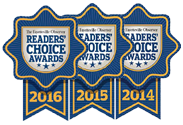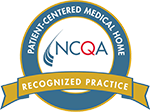Understanding the Early Signs of Autism in Children
On average, 1 in 36 children will be diagnosed with autism spectrum disorder (ASD) by the time they are eight years old. While this may not seem very common, This comes to roughly 2.8 percent of all children in this age bracket, according to the Centers for Disease Control, which has increased since the 1990s. The increase is due to better awareness and screenings for autism by parents, pediatricians, and schools, as well as changes in how ASD is defined and diagnosed by professionals.
One of our goals at Rainbow Pediatrics is to provide information to help parents and caregivers raise happy and healthy children. Highlighting topics such as autism in children aligns with this goal. The more you know as a parent or caregiver, the greater success you will have in raising healthy and happy children.
Understanding the early signs of autism in children
While children with autism typically walk, crawl, and sit on time, the red flag often isn’t raised until parents notice other developmental delays, such as verbal and nonverbal language and social skill development.
The American Academy of Pediatrics has provided three early signs of autism. These signs are often subtle and can go undetected. We aim to change that through education. When autism is diagnosed, early treatments can be started to help children gain essential social and communication skills. Listed below are three early signs of autism.
- Delay or lack of joint attention. Joint attention is the ability to look back and forth between an object and another person jointly with another person. It is a shared activity. For example, a train passes by, and Mom points to it. The child should be able to follow the mom’s finger to the general location of the train, where they are both enjoying watching it. This is important for developing social communication as well as cognitive skills. Joint attention should develop not long after birth and certainly by age three.
- By 12 months of age. Most children can immediately look in the direction a person is pointing. They will then look back at the parent and mirror their expression—for example, a smile or a look of surprise. Children who are on the spectrum may ignore the parent. This often makes the parent feel the child has a hearing issue.
- By 15 months of age. Most children can locate objects they want and then point to them. Children on the spectrum may take a parent’s hand and lead them to the object without making much eye contact. They may even place the parent’s hand on the object.
- By 18 months of age. Most children point at objects they are interested in or want. They want their parent (or another person) to enjoy looking at the object of their interest. They will look back and forth between the object of their interest and their parent to ensure they are also interested. Children on the spectrum often point to an object because they want their parent to retrieve it. The big difference is that they are not interested in the parent enjoying looking at the object as they are.
- Language delays – As mentioned earlier, one of the more common signs of autism in children is nonverbal and verbal language delays. Because children with autism learn language differently, what they say may appear in chunks or phrases.
- Children with autism may label objects quite well but are delayed in labeling people.
- It is common for children to mimic what they hear, but this is short-lived. Children with autism often precisely repeat words, sounds, and even tones used by others. This can include what they see on television and what another person says. This is called echolalia. An excellent example is the child who wants a cookie, and instead of asking for a cookie directly, he will say, “Do you want a cookie?” When making his request, he will use the same tone he’s heard this question asked in before.
- Regression of milestones and skills. It is not uncommon for children with autism to regress in developmental milestones. 1 in 4 children develop some language and then suddenly or gradually stop using the language they developed. This often happens between 15 and 24 months of age. Children may also become more withdrawn socially from others.
Understanding the early signs of autism is essential for helping identify, diagnose, and treat autism. The earlier autism is treated, the more dramatic the treatment can make in their lives. If you suspect your child may have autism, schedule an appointment with your child’s pediatric provider. We are here to help. Let us know how we can help you and your child live their healthiest and happiest life.








